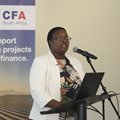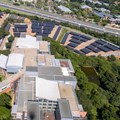South Africa's updated Integrated Resource Plan (IRP) 2023, released with years of delay, provides a mixed bag for the country's energy future. Formally issued by Minister of Mineral Resources and Energy Gwede Mantashe, the original intention was for the plan to lay out long-term vision for net-zero emissions and an increased focus on renewables. The plan, however, lacks the necessary ambition and detailed execution strategy. The private sector must fill the gaps to ensure a viable energy future.

Dave Masureik, CEO of New Southern Energy
IRP2019 provided for the installation of over 25GW of renewable energy capacity and 3GW of energy storage by 2030, procured through regular auctions.
Steps have been toward achieving this. In October 2021, government awarded power purchasing agreements (PPAs) for 2.6GW of clean-energy capacity through its auction program, and in June 2022, it opened bids for an increased volume of PPAs for 5.2GW of wind and solar projects.
While the recently appointed Minister of Electricity, Dr Kgosientsho Ramokgopa explained: “This will underpin our responses in relation to how we are going to address the energy situation in the country,” to many industry stalwarts, the 2024 document signals a hollow victory, replete with contradictions and lacking the detail, ambition and technical prowess required to achieve effectiveness.
However, we must not let a jaded mindset affect how we react to the opportunity to contribute.
New IRP provides for two time horizons
Open to public comments until 23 February, the 52-page document considers several scenarios and latest developments in the country's electricity industry.
It delineates two-time periods: the present until 2030, focusing on addressing current generation capacity constraints and system requirements to close the supply gap; and the period from 2031 to 2050, focusing on long-term electricity generation planning with the goal to achieve a net zero electricity sector by 2050.
Again, in the long term, the IRP outlines a combination of dispatchable technologies with high utilisation factors - including different combinations of nuclear, renewables, clean coal and gas - which will diversify supply and lower carbon emissions, which is very positive.
Private sector must weigh-in
The DMRE intends to finalise the IRP by the end of May and this is where the private sector needs to step in. While scepticism may exist regarding the plan's potential efficacy, the importance of informed and robust input from key stakeholders within the private sector cannot be emphasized enough.
The energy landscape is dynamic, and the expertise of industry players and the private sector leaders that are in the trenches, will be invaluable in navigating the complexities of electricity demand, supply, and infrastructure costs and implementation requirements.
It is imperative that key players within the renewables sector resist succumbing to disillusionment with the government's perceived ineffectiveness or allowing pride to hinder their engagement in shaping the IRP.
Let’s come together and share insights, analyses, and innovative solutions that can contribute to a more comprehensive and resilient energy strategy, generously.
The collaboration between government and private stakeholders will not only enhance the plan's credibility but also foster a sense of shared responsibility in addressing our pressing energy challenges.
Consistent procurement is key to accelerating capacity
Consistent procurement is key to driving investment into new clean energy capacity. Over the last decade, policy instability and lack of consistent procurement have led to highly variable investment flows to projects in the country.
For example, the government refused to sign PPAs won under the fourth round of its Renewable Energy Independent Power Producers Program for two years, delaying financing decisions for projects.
Thereafter came a four-year delay before the announcement of the fifth auction round, which was finally held in 2021. Because the auction program is the primary route to market for new renewable energy projects and our power sector is highly regulated, the lack of auction rounds over 2015-2021 severely curtailed the development of new projects, dampening investment.
It is essential for this erratic pattern to stop so that progress can be made. Reliable opportunities for investors to support clean energy projects through regular, centralised procurement programs have been highly effective in many countries around the world, and the same will yield here.
Energy wheeling and trading
We are also at the critical juncture where South Africa has the potential to leverage the benefits of energy wheeling, at scale, and this needs to be included in the current IRP.
Wheeling allows independent power producers (IPPs) to sell electricity directly to off-takers, while paying for the use of the electricity grid owned by a third party (e.g. a municipal distributor or Eskom) through use-of-system charges.
Harnessing the energy trading model, an entire ecosystem is created that enables people and organisations to transact with renewable energy in a controlled framework. Energy “exchanges” are mushrooming across South Africa, entering this marketplace with enthusiasm, many with solid backers.
There is a strong appetite across the entire value chain of investors and institutions that are keen to put their weight behind energy generation in South Africa.
Energy wheeling will enable tremendous amounts of energy to be injected into the grid, and for a truly people - led solution to play a role in South Africa’s energy future.










































